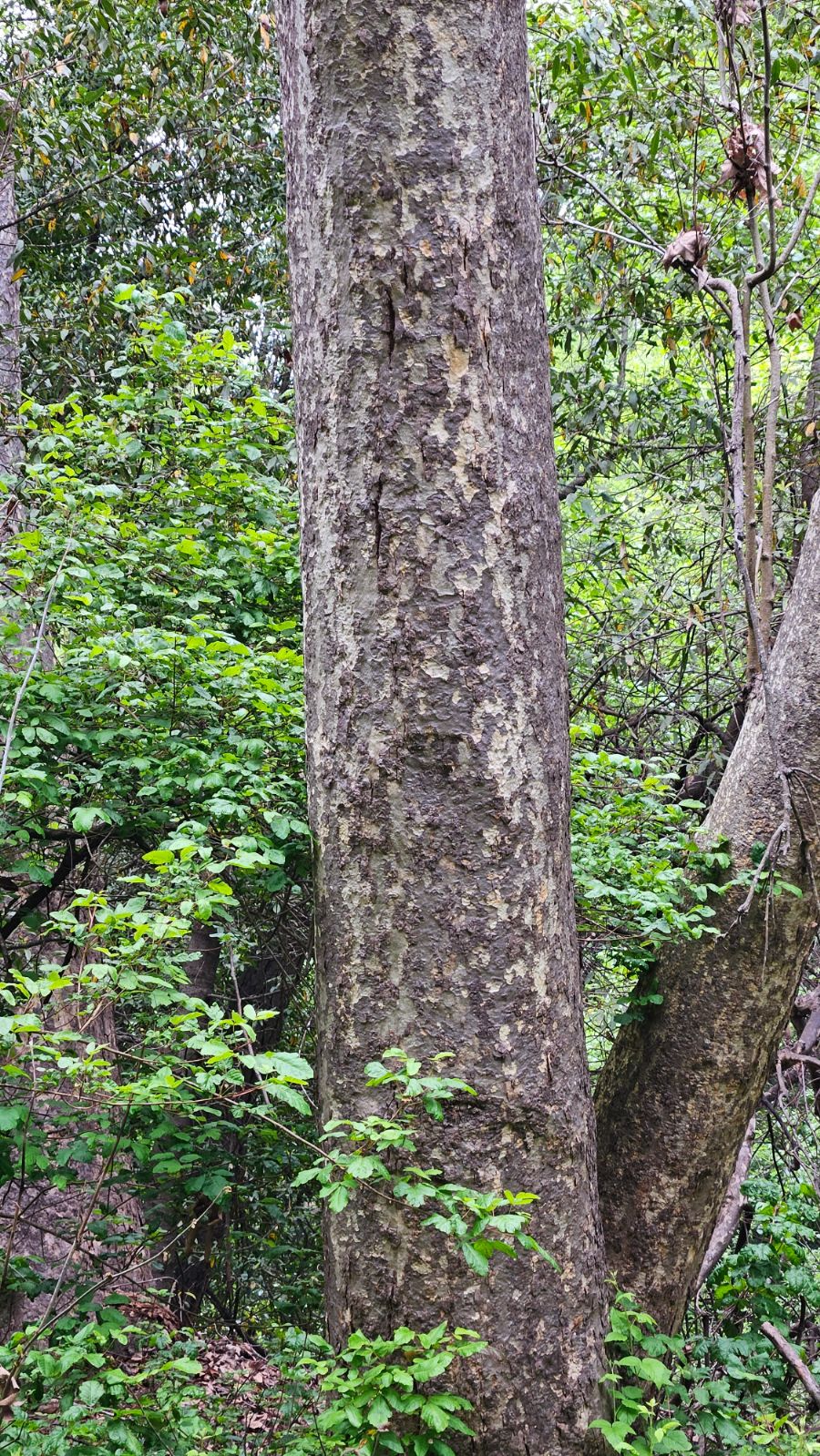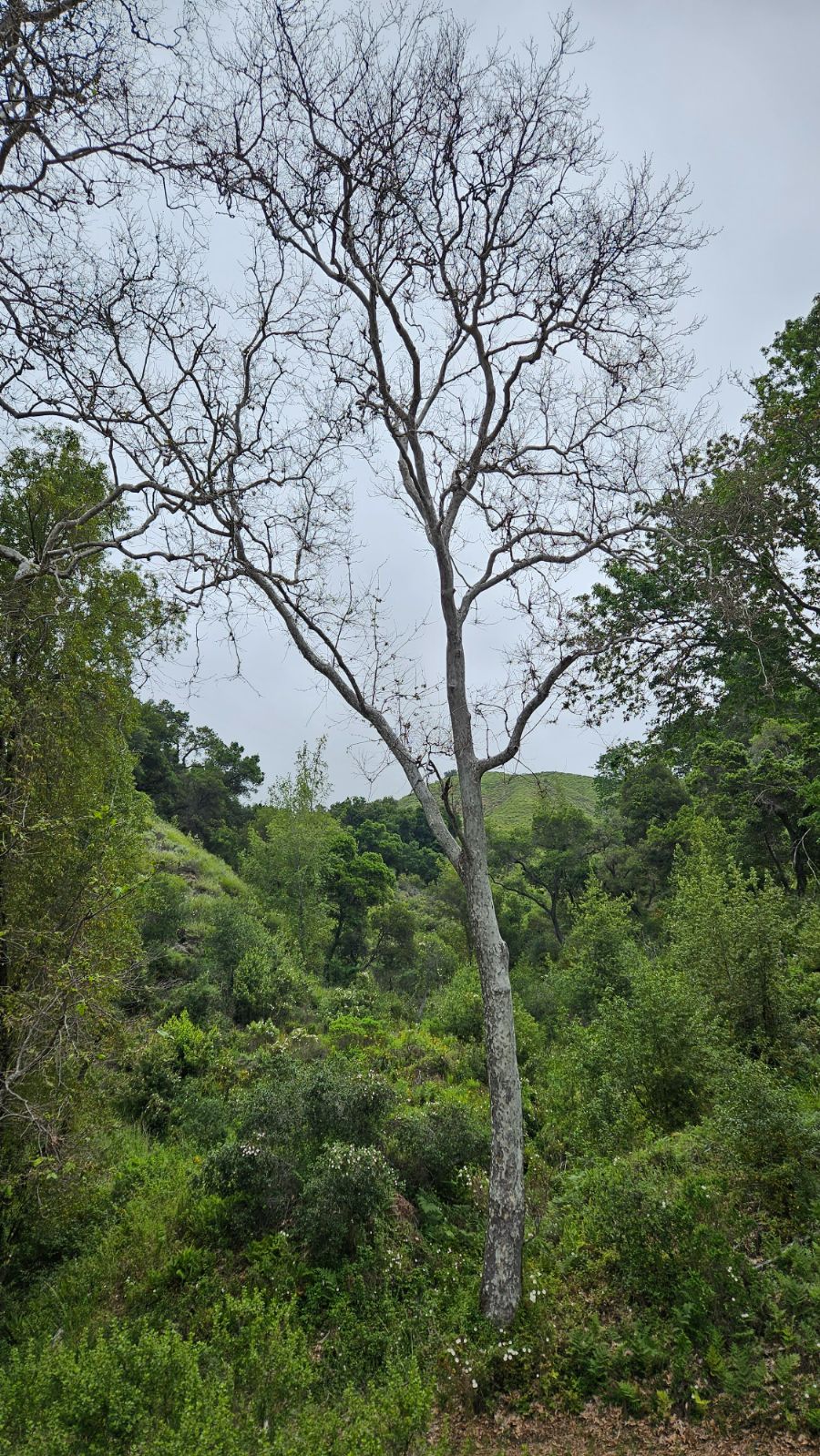Platanus racemosa
Credits
Article from Bean's Trees and Shrubs Hardy in the British Isles
Recommended citation
'Platanus racemosa' from the website Trees and Shrubs Online (treesandshrubsonline.
Genus
Synonyms
- P. californica Benth.
Infraspecifics
A tree 40 to 100 ft high in California, with a trunk 2 to 6 ft in diameter; young shoots clothed with a thick wool which falls away during the summer. Leaves usually five- sometimes three-lobed, the lobes reaching half-way or more than half-way to the midrib, pointed and shallowly, often distantly, toothed, tapered to slightly heart-shaped at the base, thickly clothed below with pale, persistent down, especially along the midrib and veins, 6 to 12 in. wide, rather more in length; stalks stout, downy, 1 to 3 in. long. Flowers in ball-like clusters, two to seven of which occur on the pendulous stalk; by the time the fruits have developed the balls are 3⁄4 in. across.
Native of California. Although introduced on several occasions it has proved to be tender. For the plane grown under the erroneous names “P. racemosa” or “P. californica”, see P. ‘Augustine Henry’.
P wrightii S. Wats.
Synonyms
P. racemosa var. wrightii (S. Wats.) Benson



